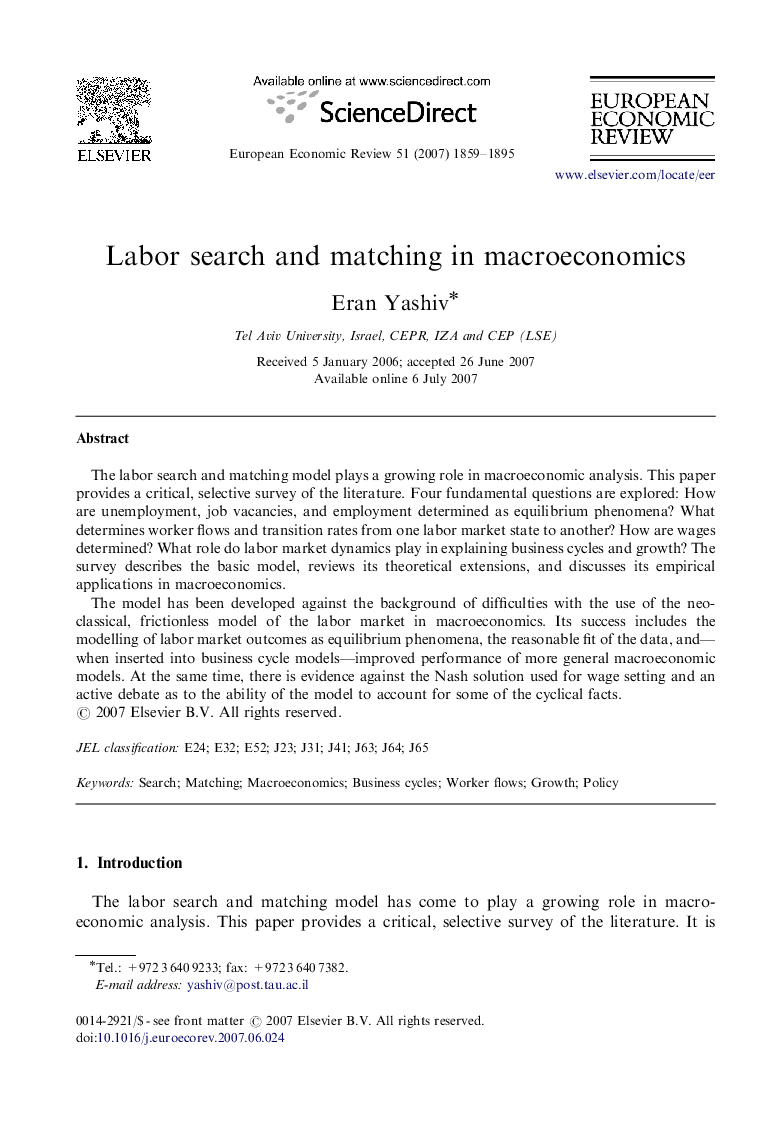| Article ID | Journal | Published Year | Pages | File Type |
|---|---|---|---|---|
| 5067390 | European Economic Review | 2007 | 37 Pages |
The labor search and matching model plays a growing role in macroeconomic analysis. This paper provides a critical, selective survey of the literature. Four fundamental questions are explored: How are unemployment, job vacancies, and employment determined as equilibrium phenomena? What determines worker flows and transition rates from one labor market state to another? How are wages determined? What role do labor market dynamics play in explaining business cycles and growth? The survey describes the basic model, reviews its theoretical extensions, and discusses its empirical applications in macroeconomics.The model has been developed against the background of difficulties with the use of the neo-classical, frictionless model of the labor market in macroeconomics. Its success includes the modelling of labor market outcomes as equilibrium phenomena, the reasonable fit of the data, and-when inserted into business cycle models-improved performance of more general macroeconomic models. At the same time, there is evidence against the Nash solution used for wage setting and an active debate as to the ability of the model to account for some of the cyclical facts.
